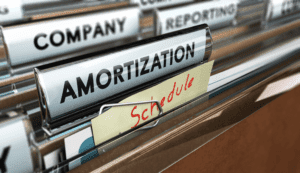
This means it will result in a liability for a company to be rid of the asset at the end of its useful life. A strong example is assets that must adhere to regulatory disposal requirements to remove waste without environmental contamination. In accounting, owner’s equity is the residual net assets after the deduction of liabilities. In the field of mathematics, specifically in regression analysis, the residual value is found by subtracting the predicted value from the observed or measured value. Imagine a situation where a company acquires a fleet of company vehicles. The company pays $250,000 for eight commuter vans it will use to deliver goods across town.
Prepare a depreciation journal entry
- Under ACRS, the prescribed percentages are used to recover the unadjusted basis of recovery property.
- You use the percentages listed under that month for each year of the recovery period to determine your depreciation deduction each year.
- The percentage of cost method multiplies the original cost by the salvage value percentage.
- The salvage value is calculated to know the expected value or resale value of an asset over its useful life.
- You can change from the declining balance method to the straight line method at any time during the useful life of your property without IRS consent.
The required use of the straight line method for an item of listed property that does not meet the predominant use test is not the same as electing the straight line method. It does not mean that you have to use the straight line method for other property in the same class as the item of listed property. If property is retired by sale or exchange, you figure gain or loss by the usual rules that apply to sales or other dispositions of property. Unless there is a change in the useful life during the time you depreciate the property, the rate of depreciation generally will not change.

Is Salvage Value the Same as Selling Price?
The lessee determines the inclusion amount by taking into account the average of the business/investment use for both tax years and the applicable percentage for the tax year the lease term begins. The limitations on cost recovery generally do not apply to any listed property leased or held for leasing by anyone regularly engaged in the business of leasing listed property. The limitations on cost recovery deductions apply to the rental of listed property. The following discussion covers the rules that apply to the lessor (the owner of the https://www.bookstime.com/ property) and the lessee (the person who rents the property from the owner).
Terminal Cash Flow
If you used the percentages above to depreciate your 5-year recovery property, it is fully depreciated. If you used the percentages above to depreciate your 3-year recovery property, your property, except for certain passenger automobiles, is fully depreciated. After you determine that your property can be depreciated under ACRS, you are ready to figure your deduction.
Depreciation and Salvage Value Assumptions
- For 1985 through 1988, you figured your ACRS deductions using 11%, 9%, 8%, and 7% × $98,000.
- Management must periodically reevaluate the estimated value of the asset as asset deterioration, obsolescence, or changes in market preference may reduce the salvage value.
- On the other hand, salvage value is an appraised estimate used to factor how much depreciation to calculate.
- It’s based on what the company thinks they can get if they sell that thing when it’s no longer useful.
- File the application within the first 180 days of the tax year the change is to become effective.
- Salvage value is affected both by how you use the property and how long you use it.
- Through that process, you’re forced to determine the asset’s useful life, salvage value, and depreciation method.
Get instant access to video lessons taught by experienced investment bankers. Learn financial statement modeling, DCF, M&A, LBO, Comps and Excel shortcuts. The beginning balance of the PP&E is $1 million in Year 1, which is subsequently reduced by after tax salvage value equation $160k each period until the end of Year 5. In order words, the salvage value is the remaining value of a fixed asset at the end of its useful life.
What is Terminal Cash Flow?
By subtracting the salvage value from https://www.facebook.com/BooksTimeInc/ the original cost, companies can calculate the carrying value of the asset after depreciation. This carrying value serves as an essential indicator of an asset’s remaining value on the company’s balance sheet. If a company is still determining how long something will be useful, they might guess a shorter time and say it’s worth more at the end (higher salvage value) to keep it on their books longer. Or, if they want to show more expenses early on, they might use a method that makes the item lose more value at the beginning (accelerated depreciation). Some companies say an item is worth nothing (salvage value of $0) because they think it has paid for itself by making money over time.

Market Demand
It includes any part, component, or other item physically attached to the automobile or usually included in the purchase price of an automobile. If you physically abandon property, you can deduct as a loss the adjusted basis of the property at the time of its abandonment. However, your intent must be to discard the property so that you will not use it again or retrieve it for sale, exchange, or other disposition. In some cases, you may change your method of depreciation for property depreciated under a reasonable method.

How can businesses use after-tax salvage value in decision-making?

Determine salvage value using the rules discussed earlier, including the special 10% rule. Divide the balance by the number of years remaining in the useful life. This gives you the amount of your yearly depreciation deduction. Unless there is a big change in adjusted basis, or useful life, this amount will stay the same throughout the time you depreciate the property.
Cash Flow After Taxes (CFAT): Definition, Formula, and Example
The money I get back on my old phone is known as its salvage value, or its worth when I’m done using it. This way, the salvage value helps in determining the depreciation; which is an integral part of accounting. A depreciation schedule helps you with mapping out monthly or yearly depreciation. 60% depreciation is reported over 6 years and salvage value is 40% of the initial cost of the car.